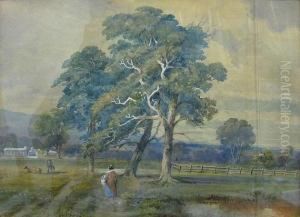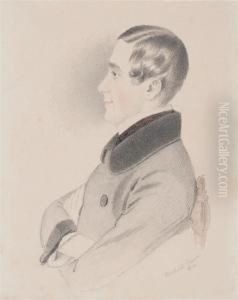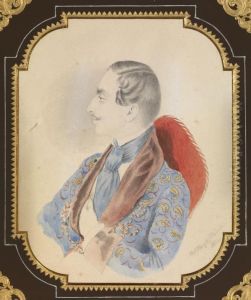Thomas Wright Paintings
Thomas Wright was an English astronomer, mathematician, instrument maker, architect and a garden designer, better known for his pioneering work on the structure of the universe. Wright was born in Byers Green, County Durham, England, in 1792. Despite his considerable contributions to science, particularly astronomy, he is not as widely known as some of his contemporaries.
Wright's early life was marked by an avid interest in astronomy and the mechanics of the celestial sphere. He came from a modest family background and was largely self-taught, which makes his achievements all the more remarkable. He worked initially as a teacher before dedicating himself to the study of the heavens.
In 1750, Wright published 'An Original Theory or New Hypothesis of the Universe', where he proposed the idea that the Milky Way was a flattened disk of stars, and that some of the nebulae that astronomers observed were actually distant galaxies. Although his work was speculative and not entirely correct in all its aspects, it was one of the earliest descriptions of the galaxy and the structure of the universe, preceding the more detailed and systematic work of William Herschel. Wright's work was influential and can be seen as a precursor to the modern understanding of galactic structure and the distribution of galaxies in the universe.
Aside from his astronomical work, Wright was skilled in designing and constructing garden buildings and landscapes. He also dabbled in architecture and was responsible for designing some notable buildings and gardens in the Northeast of England during the 18th century.
Thomas Wright's death in 1849 marked the end of a life dedicated to the pursuit of understanding the cosmos and applying his knowledge to practical problems of his time. He was a polymath whose contributions to astronomy helped to shape our understanding of the universe, even though his name is not as prominent as that of some other historical figures in science.











